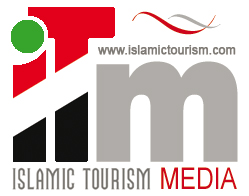|
PHNOM PENH City.
Motaz Othman, ITM
I was lucky to have the chance to visit Phnom Penh City, where the ATF “ Asean Tourism Forum” took place between 15-21 January 2011.
The city looks rich from one angel and looks poor from another, but people are happy and hospitality. Phnom Penh is a city where you can relax and enjoy it’s rich history, but for sure you have to visit the other attractive places in Cambodia like Angkor Wat.
The capital of the Kingdom of Cambodia, Phnom Penh, is located at the confluence of three rivers - the Mekong, the Bassac and Tonle Sap. The city is divided into three sections - the north, an attractive residential area; the south or the French part of the city with its ministries, banks and colonial houses; and the centre or the heart with its narrow lanes, markets, foods stalls and shops.
Over the past four years, the city has undergone tremendous changes - businesses are springing up constantly and tourism is once again booming. Cambodia has one of the most liberal investment laws to further boost managed to retain its charm and character - cyclos that weave through traffic with ease, broad boulevards, old colonial buildings, parks and green spaces that reminds one of the country's French heritage, and above all its people who always have a smile for you.
A stone's throw away from the Tonle Sap is the royal Palace built on the site of the Banteay Kev, a citadel built in 1813. The Palace grounds contain several buildings: the Throne Room of Prasat Tevea Vinichhay which is used for the coronation of kings, official receptions and traditional ceremonies; the Chan Chhaya Pavilion which is a venue for dance performances; the king's official residence called the Khemarin; the Napoleon Pavilion and the spectacular Silver Pagoda. This pagoda is worth exploring. It owes its name to the 5,000 silver tiles weighing 1kg each which cover the entire floor.
The emerald Buddha sits on a pedestal high atop the dias. In front of the dias stands a life-size Buddha made of solid gold and weighs 75kg. It is decked with precious gems including diamonds, the largest of which is 25 carats. Also on display at the sides are the coronation apparel and numerous miniature Buddha in gold and silver.
The walls surrounding the compound which is the oldest part of the palace, are covered with frescos depicting scenes from the Khmer version of the Ramayana.
INDEPENDENCE MONUMENT:
The monument was built in 1958 to symbolise the independence that Cambodia gained from France in 1953. The French fully abandonned their interests in Indochina following defeat by the Vietnamese at the battle of Dien Bien Phu in May 1954. Independence is marked in Cambodia on the 9th November. The monument has a unique and peculiar style and doubles as a memorial to Cambodian patriots who died for their country.
NATIONAL MUSEUM
The NATIONAL MUSEUM of Cambodia is housed in a graceful terracotta structure of traditional design (built 1917-20) just north of the Royal Palace. It is open Tuesday to Sunday from 8 to 11 am and from 2 to 5 pm; entry is $3. Photography is prohibited inside. The School of Fine Arts (École des Beaux-arts) has its headquarters in a structure behind the main building. See more...
NEW CENTRAL MARKET:
A visit to the markets and market halls is a must as they give an opportunity to be acquainted with the country's local produce and also to buy textiles, antiques, gold and silver jewellery.
The four wings of the yellow coloured Central Market are teeming with numerous stalls selling gold and silver jewellery, antique coins, clothing, clocks, flowers, food, fabrics, shoes and luggage. | 